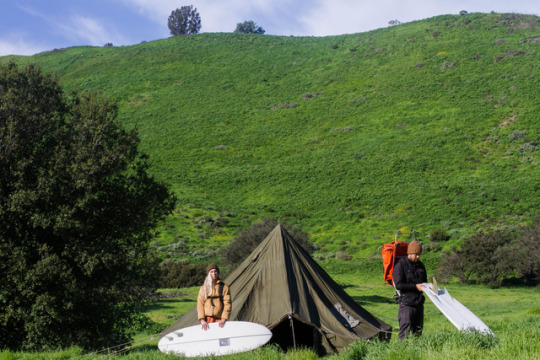#JJ Wessels
Photo

Natalie and JJ Wessels
#natalie wessels#jj wessels#surfing#surfer#surf#photograph#photographer#photography#surf photograph#surf photographer#surf photography#travel#travel photography#travel photographer#travel photograph#camping#outdoors#surfboard#bonzer#thruster#california
84 notes
·
View notes
Photo

JJ Wessels
39 notes
·
View notes
Text
Grom of the Week: Wesley Rehberg
SUPPORT THIS INDEPENDENT JOURNALISM
The article you’re about to learn is from our reporters doing their essential work — investigating, researching, and writing their tales. We wish to present informative and inspirational tales that join you to the individuals, points and alternatives inside our neighborhood. Journalism requires plenty of assets. As we speak, our enterprise mannequin has been interrupted by the pandemic; the overwhelming majority of our advertisers’ companies have been impacted. That’s why the SC Occasions is now turning to you for monetary assist. Study extra about our new Insider’s program here. Thanks.
JOIN NOW
By Jake Howard
“My favourite factor about browsing is simply the sensation of being on the nostril; it’s like I’m floating,” explains Wesley Rehberg.
A 15-year-old freshman at San Clemente Excessive, Rehberg first realized to surf in Mexico when he was solely 5. When he was 11, he jumped on his first longboard, and his surf life has by no means been the identical since.

Wesley Rehberg. Picture: Courtesy of Connor Eck
“I look as much as lots of people in browsing, however I must say my favourite surfers are JJ Wessels and Joel Tudor,” Rehberg says. “Each of those surfers are filled with circulate and elegance on the wave. And to me, model is a very powerful factor. Like Gerry Lopez stated, ‘Browsing is angle dancing.’ ”
Garnering company assist from Christenson Surfboards and Oakley eyewear, when Rehberg’s not hanging 10, you’ll most likely discover him dropping a line within the water within the Dana Level Harbor. An avid fisherman, he’s additionally stable on a skateboard and snowboard.
“Browsing conjures up me, as a result of every time I’m doing it, I’m not desirous about the rest however what I’m going to attempt to be taught on the subsequent wave,” he says.
When you’ve got a candidate for Grom of the Week, we wish to know. Ship an electronic mail to [email protected].
Associated
BECOME AN INSIDER TODAY
Reliable, correct and dependable native information tales are extra essential now than ever. Help our newsroom by making a contribution and changing into a subscribing member as we speak.
CONTRIBUTE NOW
!function(f,b,e,v,n,t,s) {if(f.fbq)return;n=f.fbq=function(){n.callMethod? n.callMethod.apply(n,arguments):n.queue.push(arguments)}; if(!f._fbq)f._fbq=n;n.push=n;n.loaded=!0;n.version='2.0'; n.queue=[];t=b.createElement(e);t.async=!0; t.src=v;s=b.getElementsByTagName(e)[0]; s.parentNode.insertBefore(t,s)}(window, document,'script', 'https://connect.facebook.net/en_US/fbevents.js'); fbq('init', '364396678263602'); fbq('track', 'PageView');
Source link
from Skate World. Skateboard News, skateboard shop https://ift.tt/3ciPoZl
0 notes
Text
PLEASE HAVE FUN at La Surferie, April 24th 2019.
PLEASE HAVE FUN at La Surferie, April 24th 2019.
Scroll down for english version.
On vous donne rendez-vous à la Surferiele mercredi 24 avril pour la projection de Please Have Fun, un film de Kevin Jansen avec Noah Wegrich, JJ Wessels, Troy Elmore, Bryce Suba, Jesse Guglielmana, Karina Rozunko, Andy Nieblas, River Covey, Makala Smith, Mick Rogers, Erin “Worm” Ashley, Simon Hetrick, Wilem Banks, Nick Melanson, Jordan Spee, Hudson Ritchie,…
View On WordPress
#california#event#featured#kevin jansen#la surferie#movie#movie premiere#nobody surf#paris#please have fun
0 notes
Text
Group B Streptococci in sushi and sashimi
I have previously posted about a large community Group B Streptococcus (GBS) outbreak in Singapore (Kalimuddin S, 2017).
In that post I alluded to the fact that my original hypothesis was that people were getting GBS by eating raw tilapia in sushi and sashimi as a result of a trade practice known as fish species substitution, where a cheaper fish species is substituted for a more expensive one and given a similar sounding name.

Somewhere on that plate is a serotype Ia ST7 GBS.
The GBS outbreak eventually turned out to be due to serotype III ST283 GBS found in bighead carp, giant snakehead and tilapia. People were getting sick consuming raw fish dishes in local Chinese stalls rather than Japanese-style restaurants.
However the question over whether GBS could be found in sushi and sashimi continued to bother me. I got a chance to study this when 2 students from Temasek Polytechnic were attached to our laboratory in 2015 (Koh TH, 2017). These students were required to do a small project so I set Terry and Fionicca off to purchase sushi and sashimi from the cheaper Japanese-style food outlets and supermarkets dotted across Singapore. At the end of the day we collected 17 fish samples sold ready-to-eat. Twelve samples were salmon, 4 were sold as ‘Tai’, and one was actually sold as tilapia. The fish were processed according the method detailed in a previous post.
We isolated 2 GBS. One was serotype II ST1 GBS resistant to tetracycline from a Salmon sample. The other was serotype Ia ST7 GBS susceptible to tetracycline from the tilapia sample. We were also able to find molecular evidence for serotype Ia ST7 GBS in a sample sold as ‘Tai’ even though we were unable to isolate the organism in culture. We did not find any serotype III ST283 GBS though this may be a limitation of the small sample size.
Besides serotype III ST283 GBS, there are two other types of GBS that are important fish pathogens, serotype Ib ST260 and serotype Ia ST7.
Serotype Ib ST260 (originally named Streptococcus difficile) is the original GBS pathogen of fish that was described as early as 1966. They are characteristically non-haemolytic. This type affects many species of fish and is widely distributed. However, there is some data to suggest that this GBS type is not found in Singapore, Malaysia, and Thailand, but may be found in Indonesia. When I first started looking out for zoonotic GBS infections in 2008, I was focused on serotype Ib ST260. In retrospect this was probably a mistake. This type is so niche-adapted that it has a reduced genome content, and so far has only been found in poikilothermic (cold blooded) animals like fish and frogs (Delannoy CMJ, 2016). It has never been described in humans and probably poses no zoonotic risk.
The origins of serotype Ia ST7 GBS are less certain. This type has caused human infections in neonates in Japan (Evans JJ, 2008), and adults in Iceland (Bjornsdotir ES, 2016), but on the whole is rarely found in humans (note both Japan and Iceland have populations known for high fish consumption). On the other hand, serotype Ia ST7 GBS have caused many outbreaks in fish, especially tilapia, in asia and the middle east. This type has also recently caused an outbreak locally in Singapore among farmed golden pomfret (Trachinotus blochii) (Chong SM, 2017). Interestingly in that manuscript, the authors say that GBS had not been detected in cultured marine and freshwater fish in Singapore prior to 2014. To confuse matters, an old American type culture collection strain of GBS (ATCC A909) was recently found to be serotype Ia ST7 (Tettelin H, 2005). This was isolated from a human neonate with sepsis in 1934! The genome of ATCC A909 was recently compared with that of serotype Ia ST7 GBS isolated from tilapia in China and found to be similar (Liu G, 2013).
So is serotype Ia ST7 GBS a zoonosis or do fish get infected as a result of human effluent polluting the environment? Delannoy et al suggest that serotype Ia ST7 and serotype III ST283 GBS that cause fish infections probably have a primarily homeothermic (warm blooded) host range and have acquired fish-associated virulence factors not usually found in human or bovine isolates (Delannoy CMJ, 2016). So perhaps an anthroponosis first then a zoonosis later?
What of the serotype II ST1 GBS resistant to tetracycline from Salmon? We think this was probably the result of human contamination of fish (human clones of GBS tend to be tetracycline resistant whereas fish isolates tend to be tetracycline susceptible).
Going back to the issue of fish species substitution and mis-labelling of fish. This is a widespread practice in the fish trade. Customers may not know the subtle difference between dory fish (Vietnamese catfish Pangasius spp. ) and the rather more prized John Dory (Zeus faber).
A butterfish (Escolar, Lepidocybium flavobrunneum) in Singapore is not the same as a butterfish in South Australia (Mulloway, Argyrosomus japonicas). It is important to know the difference! As a cautionary tale I refer you to a blogpost by MIPHIDIC.
One of the more interesting parts of our study was trying to identify the actual fish species that was being sold as ‘Tai’ which most people would probably assume was the fish you normally see on ‘Japan Hour’* which is the Red Sea Bream (Pagrus major).
We did this by a method known as fish barcoding. This involved sequencing the cytochrome c oxidase subunit I gene of the fish meat and submitting the sequences to the Fish-Bol database.
Of the 4 ‘Tai’ samples, 2 were indeed Red Sea Bream (Pagrus major), 1 was Crimson Snapper (Lutjanus erythropterus), this was the sample that had molecular evidence for serotype Ia, ST7 GBS. The other sample was a Nile tilapia (Oreochromis niloticus). So if you want to be sure of what fish you are eating, order the whole fish or go to a reputable restaurant (and be prepared to pay more).
*A popular TV programme in Singapore featuring travel and food in Japan.
Kalimuddin S, Chen SL, Lim CTK, Koh TH, Tan TY, Kam M, Wong CW, Mehershahi KS, Chau ML, Ng LC, Tang WY, Badaruddin H, Teo J, Apisarnthanarak A, Suwantarat N, Ip M, Holden MTG, Hsu LY, Barkham T; Singapore Group B Streptococcus Consortium. 2015 Epidemic of Severe Streptococcus agalactiae Sequence Type 283 Infections in Singapore Associated With the Consumption of Raw Freshwater Fish: A Detailed Analysis of Clinical, Epidemiological, and Bacterial Sequencing Data. Clin Infect Dis. 2017 May 15;64(suppl_2):S145-S152. (no free access)
Koh TH, Cao DY, Khoo BC, Ong LH, Teo F, Tan TW. Group B Streptococci in Sushi and Sashimi. Ann Acad Med Singapore. 2017 Feb;46(2):74-75. (free access)
Delannoy CM, Zadoks RN, Crumlish M, Rodgers D, Lainson FA, Ferguson HW, Turnbull J, Fontaine MC. Genomic comparison of virulent and non-virulent Streptococcus agalactiae in fish. J Fish Dis. 2016 Jan;39(1):13-29. (no free access)
Evans JJ, Bohnsack JF, Klesius PH, Whiting AA, Garcia JC, Shoemaker CA, Takahashi S. Phylogenetic relationships among Streptococcus agalactiae isolated from piscine, dolphin, bovine and human sources: a dolphin and piscine lineage associated with a fish epidemic in Kuwait is also associated with human neonatal infections in Japan. J Med Microbiol. 2008 Nov;57(Pt 11):1369-76. (free access)
Björnsdóttir ES, Martins ER, Erlendsdóttir H, Haraldsson G, Melo-Cristino J, Kristinsson KG, Ramirez M. Changing epidemiology of group B streptococcal infections among adults in Iceland: 1975-2014. Clin Microbiol Infect. 2016 Apr;22(4):379.e9-379.e16. (free access)
Chong SM, Wong WK, Lee WY, Tan ZB, Tay YH, Teo XH, Chee LD, Fernandez CJ.Streptococcus agalactiae outbreaks in cultured golden pomfret Trachinotus blochii (Lacépède), in Singapore. J Fish Dis. 2017 Jul;40(7):971-974. (no free access)
Tettelin H, Masignani V, Cieslewicz MJ, Donati C, Medini D, Ward NL, Angiuoli SV, Crabtree J, Jones AL, Durkin AS, Deboy RT, Davidsen TM, Mora M, Scarselli M, Margarit y Ros I, Peterson JD, Hauser CR, Sundaram JP, Nelson WC, Madupu R, Brinkac LM, Dodson RJ, Rosovitz MJ, Sullivan SA, Daugherty SC, Haft DH, Selengut J, Gwinn ML, Zhou L, Zafar N, Khouri H, Radune D, Dimitrov G, Watkins K, O'Connor KJ, Smith S, Utterback TR, White O, Rubens CE, Grandi G, Madoff LC, Kasper DL, Telford JL, Wessels MR, Rappuoli R, Fraser CM. Genome analysis of multiple pathogenic isolates of Streptococcus agalactiae: implications for the microbial "pan-genome". Proc Natl Acad Sci U S A. 2005 Sep 27;102(39):13950-5. (free access)
Liu G, Zhang W, Lu C. Comparative genomics analysis of Streptococcusagalactiae reveals that isolates from cultured tilapia in China are closelyrelated to the human strain A909. BMC Genomics. 2013 Nov 11;14:775. (free access)
3 notes
·
View notes
Video
vimeo
Used 1950’s Safari D-fin longboard for sale. Found in the Mojave Desert , buried in the dirt, surfed by JJ Wessels in Ventura and skated by the Matix team on Mike Anderson’s mini ramp. Pick up only, no shipping, wax included (what’s left on the deck). •disclaimer – this board is not for sale, watch the video and enjoy! Stay tuned for the Holiday Backyard Jam featuring the 1950's Safari D-Fin and the Matix team
0 notes
Video
vimeo
ROBOTS FROM- EP 3 from Robots From Outerspace on Vimeo.
Featuring:
Nick Melanson: (instagram.com/nickmelanson/)
Karina Rozunko: (instagram.com/karinarozunko/)
JJ Wessels: (instagram.com/jjwessels_/)
Worm: (instagram.com/wormtown/)
Andy Neiblas: (instagram.com/andynieblas/)
Tyler Warren: (instagram.com/tyler_warren/)
Music:
“Bali Pulau Bagus” by Karin Cybe
“Dreams” by Pete Drake & His Talking Steel Guitar
“Stopp, Seisku Aeg!”” by Velly Joonas
Director:
Kevin Jansen
Cinematography:
Kevin Jansen
Editor:
Kevin Jansen
0 notes
Text
A former Googler who left after 2 years to build her own startup explains how to know it's time to quit your job
• Sometimes, it can be tricky to determine when to leave your job and pursue another opportunity.
• WayUp CEO and cofounder Liz Wessel, who quit Google after two years, has some insight on timing your move.
• If the prospect of your next step is actually distracting you from your work, that's a sign it's time to move on.
WayUp CEO and cofounder Liz Wessel knew exactly when she needed to leave Google.
After all, she'd gone into the company with the intention of departing after two years to found her own business. She'd even told the recruiters at Google of her plans when she joined the tech giant full-time in 2012.
The recruiters approved of her ambitions. After two years, she left and launched WayUp — a job platform for college students and early-stage professionals — with cofounder JJ Fliegelman.
But, if you haven't planned as far ahead as Wessel, how can you tell when it's the right time to move on? How can you avoid jumping the gun or staying too long?
The answer to those questions really depends on the specific opportunity — and your personal circumstances. But if you can't stop thinking of your next step, that's a pretty good indicator that you should make your move, Wessel told Business Insider. That goes for whether it's a new role, company, or a whole new industry.
"If you can't do a good job at your job anymore because you're spending all of your time thinking about another job opportunity, that's probably a good sign," she said.
Wessel said this applies whether or not you plan on starting your own business. She said she saw plenty of friends go through a similar period of distraction.
"The one thing we had in common was we couldn't stop thinking about something else," she said. "Like, 'I just really want to work at this one tech startup that I'm just so passionate about' or 'I'm in finance but I just love this one fintech company.'"
Either way, one thing that shouldn't affect your plans is worrying about how job-hopping might be perceived.
"It's not about how often you switch jobs," Wessel said. "As long as you're doing things that you're passionate about and that you're learning from, I promise you, you will be able to tell that narrative in the next interview very well."
SEE ALSO: WayUp CEO and cofounder Liz Wessel always knew she wanted to be an entrepreneur.
Join the conversation about this story »
NOW WATCH: A CEO and former Googler shares 2 tricks for cold emailing anyone
0 notes
Photo

morning sunrise shoot during the 2017 super bloom.
0 notes
Photo

JJ Wessels. Oceanside, CA.
47 notes
·
View notes
Text
Mutations in DONSON disrupt replication fork stability and cause microcephalic dwarfism.
PubMed: Mutations in DONSON disrupt replication fork stability and cause microcephalic dwarfism. Nat Genet. 2017 Feb 13;: Authors: Reynolds JJ, Bicknell LS, Carroll P, Higgs MR, Shaheen R, Murray JE, Papadopoulos DK, Leitch A, Murina O, Tarnauskaitė Ž, Wessel SR, Zlatanou A, Vernet A, von Kriegsheim A, Mottram RM, Logan CV, Bye H, Li Y, Brean A, Maddirevula S, Challis RC, Skouloudaki K, Almoisheer A, Alsaif HS, Amar A, Prescott NJ, Bober MB, Duker A, Faqeih E, Seidahmed MZ, Al Tala S, Alswaid A, Ahmed S, Al-Aama JY, Altmüller J, Al Balwi M, Brady AF, Chessa L, Cox H, Fischetto R, Heller R, Henderson BD, Hobson E, Nürnberg P, Percin EF, Peron A, Spaccini L, Quigley AJ, Thakur S, Wise CA, Yoon G, Alnemer M, Tomancak P, Yigit G, Taylor AM, Reijns MA, Simpson MA, Cortez D, Alkuraya FS, Mathew CG, Jackson AP, Stewart GS Abstract To ensure efficient genome duplication, cells have evolved numerous factors that promote unperturbed DNA replication and protect, repair and restart damaged forks. Here we identify downstream neighbor of SON (DONSON) as a novel fork protection factor and report biallelic DONSON mutations in 29 individuals with microcephalic dwarfism. We demonstrate that DONSON is a replisome component that stabilizes forks during genome replication. Loss of DONSON leads to severe replication-associated DNA damage arising from nucleolytic cleavage of stalled replication forks. Furthermore, ATM- and Rad3-related (ATR)-dependent signaling in response to replication stress is impaired in DONSON-deficient cells, resulting in decreased checkpoint activity and the potentiation of chromosomal instability. Hypomorphic mutations in DONSON substantially reduce DONSON protein levels and impair fork stability in cells from patients, consistent with defective DNA replication underlying the disease phenotype. In summary, we have identified mutations in DONSON as a common cause of microcephalic dwarfism and established DONSON as a critical replication fork protein required for mammalian DNA replication and genome stability. PMID: 28191891 [PubMed - as supplied by publisher] http://dlvr.it/NN5cdL
0 notes
Photo

690 notes
·
View notes
Video
vimeo
One Wave Tapas are short Longboard apetizers. From take off to pull out, fade out or wipe out what you see is what you get... This is the second serving of this short series of Tapas made with footage from 2011... In this one JJ Wessels takes off fin first and shows his class and mastery on theses waves.
0 notes
Photo

你們的板子有那麼多和那麼豐富嗎?
Captain Fin Co. 選手 Scotty Stopnik 和他的板子
9 notes
·
View notes
Video
vimeo
expencive porno movie
7 notes
·
View notes
